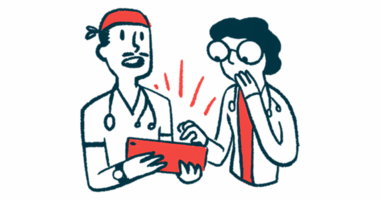Patient vigilance can help to avoid or detect medical error
Treatment is a partnership between patients and their healthcare professionals

I’ve had epilepsy since I was 9 years old. Because of this, I’ve spent part of my life around hospitals and doctors’ offices. I became aware of the pitfalls that can arise in patient care, and how they can be avoided.
I learned early in life the importance of patient involvement in healthcare planning. Then, three years ago, I was diagnosed with myasthenia gravis (MG). Since then, events of my care have demonstrated how a lack of patient involvement can be detrimental.
A year and a half after my diagnosis, for instance, I experienced my first myasthenic crisis. The COVID-19 pandemic was at its peak, and visitors weren’t allowed in the hospital. I was 1,500 miles from home, which added to my feelings of isolation. When I arrived at the emergency room, I knew I was on my own.
Loved ones offered advice over the phone, but they weren’t physically present and thus lacked the information I had. Sometimes when I made difficult decisions about my care, my loved ones and I disagreed. I refused a feeding tube, for example. I decided to postpone or avoid procedures. And the list goes on. I have enormous respect for their advice, so sticking with my decisions was difficult. But I knew it was for the best.
One instance made me feel secure in my ability to evaluate facts and make decent, informed choices about my MG.
Observe and double-check
My treatment plan involved a round of plasmapheresis, which involves the insertion of an intravenous line that remains inside the patient throughout the 10-day process. A resident doctor was inserting the line while the hospital’s director of nephrology supervised. We were about to begin the procedure when the resident doctor picked up a needle that had been sitting on a countertop and readied himself.
I looked at the supervising doctor, and in my muddled speech asked if the needle should be sterile. All hell broke loose. The staff hadn’t noticed that the needle wasn’t sterile. The consequences could’ve been dire.
That moment taught me the importance of overseeing even the smallest of details of my care.
I wish I could say that since then, I’ve maintained constant vigilance, but I haven’t. Recently, I was forced to relearn that complacency can set in and lead to harmful results.
Since December, I’ve received monthly Vyvgart (efgartigimod) infusions. These consist of four 1,200 mg infusions. The manufacturer (Argenx), the specialty pharmacy that provides the meds, and the nursing staff who perform the infusions are an incredible team. Everything went without a hitch until three weeks ago.
For the second and third infusions of my most recent cycle, the dosage I received was 400 mg above the maximum approved by the U.S. Food and Drug Administration (FDA). When the error was discovered, there was consternation in many quarters. This error was costly since each vial costs tens of thousands of dollars, and two of them would need to be replaced. More importantly, from my standpoint, the increased dosage could result in unknown side effects, as the manufacturer only guarantees the safety of FDA-approved dosages.
Initially, my anxiety was intense, but fatigue proved to be the only major side effect. I’m still alive. I don’t spend nights howling at the moon, nor did I grow two heads. But the past few weeks demonstrated how I must double-check the infusing nurse’s work.
It also reminded me that medical professionals are humans, too. Even the best ones make mistakes. This truth was nicely summarized in a staff article on the website NurseJournal: “Nurses, no matter how logical they may be, and how prepared they are to do the best possible job, are still human beings who are capable of committing errors.”
According to StatPearls, “Medication error is widely accepted as the most common and preventable cause of patient injury.”
But reducing medical errors is not limited to the work of nurses and other medical professionals. We patients must also be vigilant during our treatment process. A partnership with those who perform our care is essential.
My story has a happy ending. I hope that my future diligence will keep things that way.
Note: Myasthenia Gravis News is strictly a news and information website about the disease. It does not provide medical advice, diagnosis, or treatment. This content is not intended to be a substitute for professional medical advice, diagnosis, or treatment. Always seek the advice of your physician or other qualified health provider with any questions you may have regarding a medical condition. Never disregard professional medical advice or delay in seeking it because of something you have read on this website. The opinions expressed in this column are not those of Myasthenia Gravis News or its parent company, Bionews, and are intended to spark discussion about issues pertaining to myasthenia gravis.








Leave a comment
Fill in the required fields to post. Your email address will not be published.